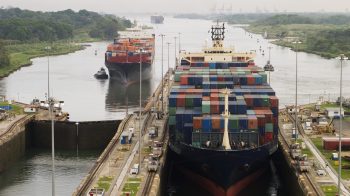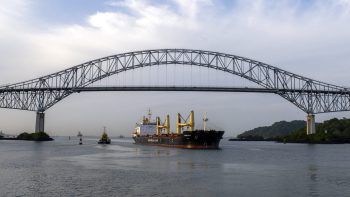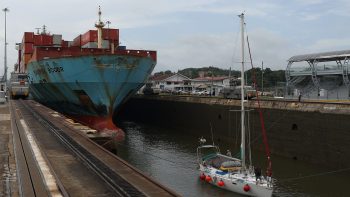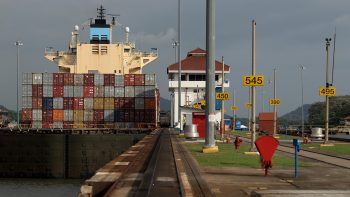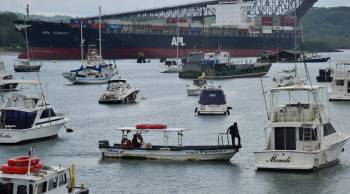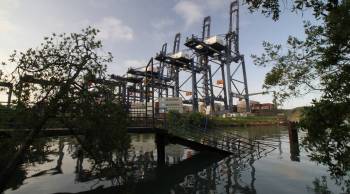
Historic drought at the Panama Canal threatens global shipping
Historic drought at the Panama Canal threatens global shipping

This story was produced by our colleagues at the BBC.
Disruptions to global shipping are largely focused on the Red Sea at the moment. A U.S. destroyer recently shot down drones and a missile fired by Houthi rebels in Yemen, and the Indian navy released images of a fire aboard a container ship from an earlier attack.
But on the other side of the globe, another key shipping route — the Panama Canal — has a serious problem of its own: not enough water.
Gatún Lake is the huge reservoir in the middle of the Panama Canal. At the hydrology stations there, it’s Nelson Guerra’s job to obsess about water levels. He’s the Panama Canal Authority’s hydrologist.
“The level, as you see on the rulers, is 81.20 feet,” he said. Normally, it should be “5 feet more.”

The lack of water at the Panama Canal is causing a global headache. The number of vessels that can pass through here each day has been slashed from 36 to 24.
José Cervantes from shipping company Agunsa said that this shortcut between the Pacific and Atlantic oceans is the natural route, and that, if it’s blocked, alternatives are needed. That would mean more time and additional costs — costs that are passed on to the consumer.
“These canals allow us to navigate at an inexpensive price — quick delivery times, which is so important,” said Christian Good, a farmer from Macon, Mississippi. “But without those canals, it really adds time.”
Each ship passing through these locks requires around 50 million gallons of water. But it means the canal here is reliant on rainwater, which is in short supply.
The drought, made worse by the El Niño weather phenomenon, is expected to last until May, according to Ilya Espino de Marotta, the canal’s chief sustainability officer.

“2023 has been the second-driest year in the history of the Panama Canal,” she said. “We had to cut down on number of ships being able to transit to maintain the lake level through the summer.”
The Canal Authority is trying to reuse as much water as possible. It’s considering building more reservoirs to store water and is even exploring cloud seeding to make it rain more.
The main cause? “We believe it’s climate change,” Espino de Marotta said. “If you look at the world — 2023, the Amazon River [was] very low. Mississippi River had to stop transit, very low level. So it’s not only Panama, it’s the world.”
The problems here are a reminder that while other routes suffer disruption from politics and piracy, climate change may yet be the biggest crisis for global trade.
There’s a lot happening in the world. Through it all, Marketplace is here for you.
You rely on Marketplace to break down the world’s events and tell you how it affects you in a fact-based, approachable way. We rely on your financial support to keep making that possible.
Your donation today powers the independent journalism that you rely on. For just $5/month, you can help sustain Marketplace so we can keep reporting on the things that matter to you.




